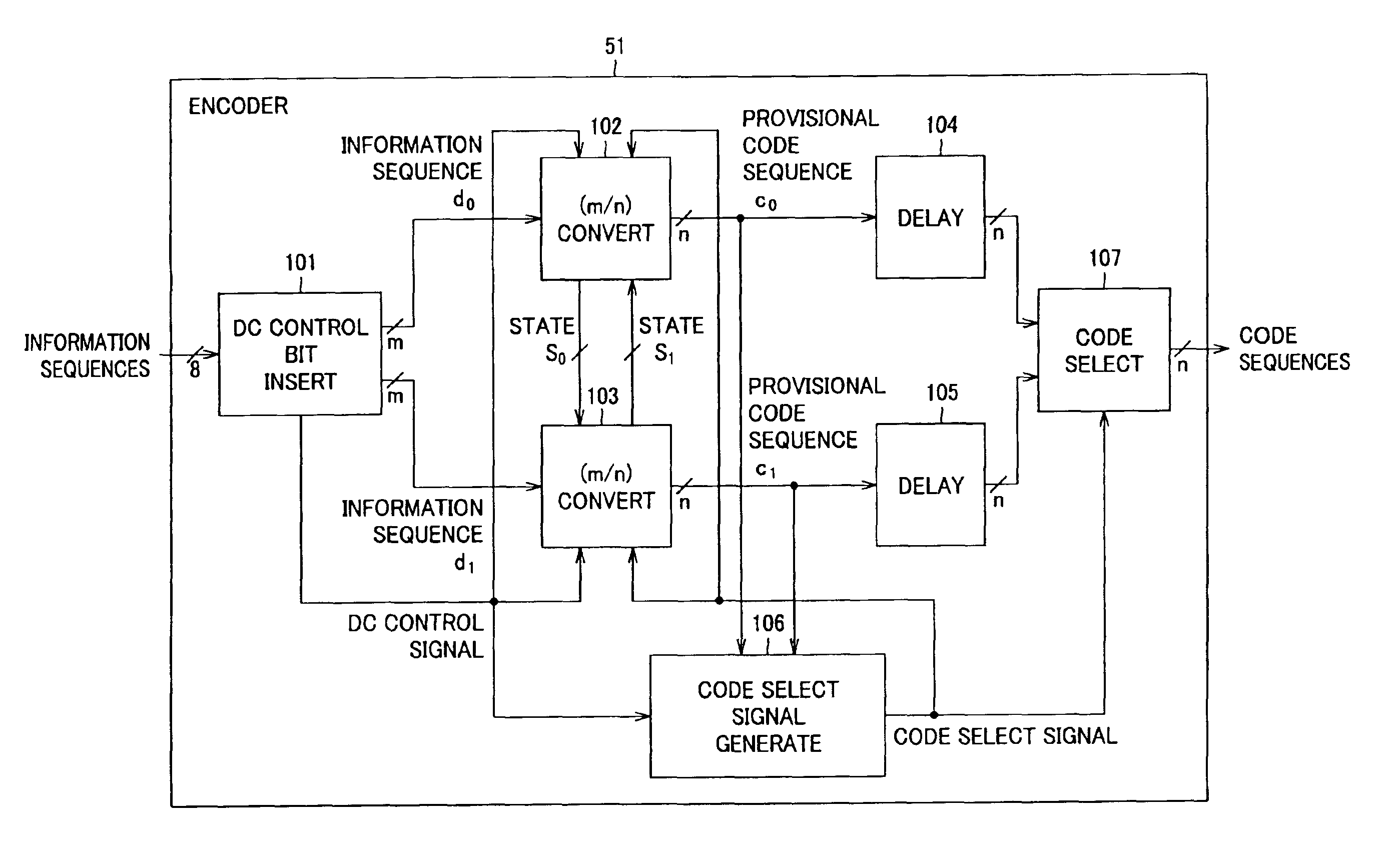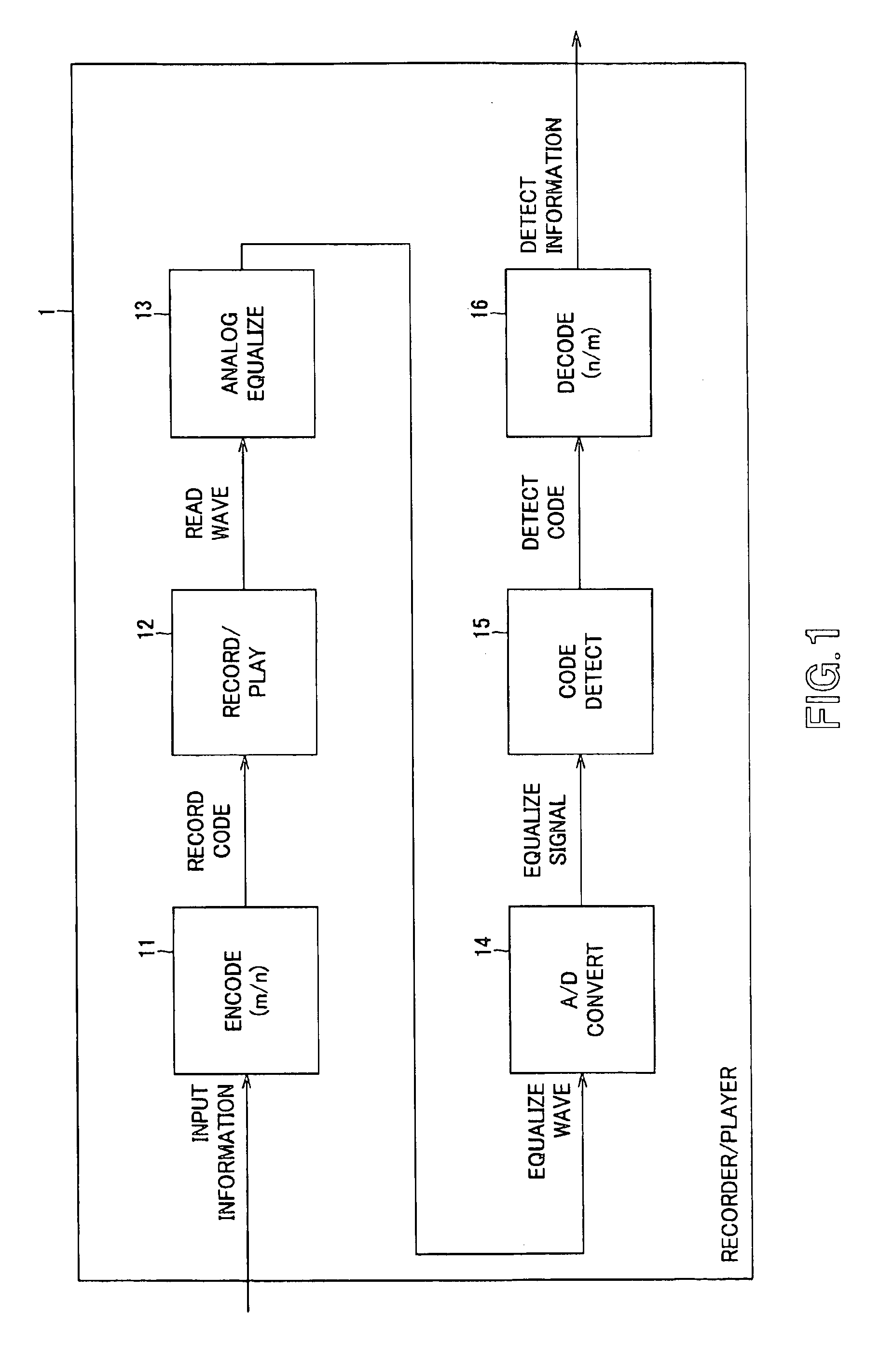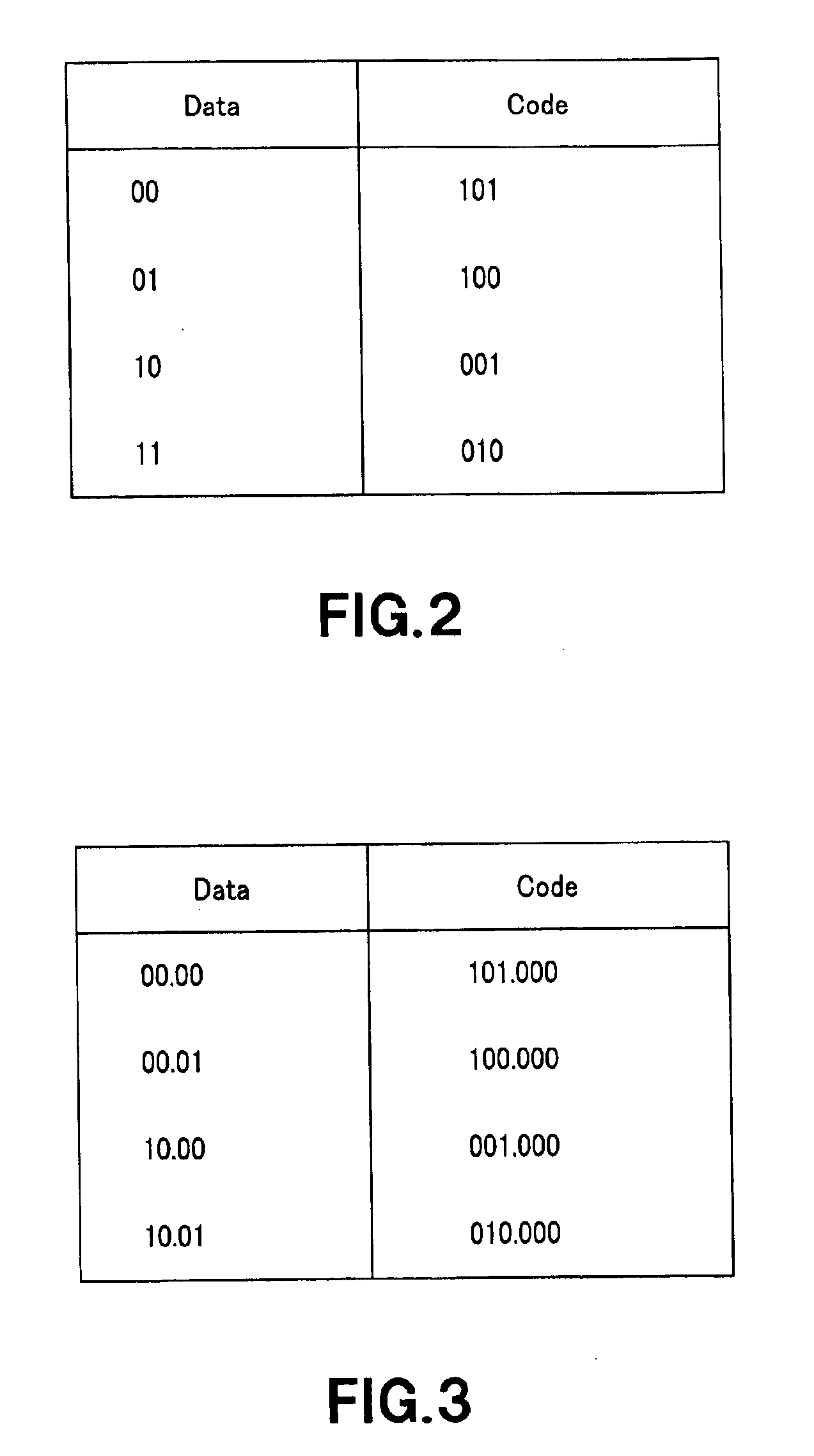Encoding apparatus and method, recording medium and program
a technology of coding apparatus and recording medium, applied in the field of coding apparatus and method, recording medium and program, can solve the problems of dc control not being done to keep the limitation, the same last finite state table, and the quality of servo signals deteriorating
- Summary
- Abstract
- Description
- Claims
- Application Information
AI Technical Summary
Benefits of technology
Problems solved by technology
Method used
Image
Examples
Embodiment Construction
[0156]The present invention will be described concerning the embodiments thereof with reference to the accompanying drawings.
[0157]Referring now to FIG. 11, there is schematically illustrated in the form of a block diagram a recorder / player 31 according to the present invention. It should be noted that the elements of this recorder / player 31, corresponding to those of the conventional recorder / player 1 shown in FIG. 1 are indicated with the same references as those used in FIG. 1 and will not be described below wherever appropriate. As will be seen, the recorder / player 31 shown in FIG. 11 is similar in construction to the recorder / player 1 in FIG. 1 except for a coding unit 51 provided in place of the encoder 11.
[0158]The recorder / player 31 shown in FIG. 11 may be composed of two units, namely, an encoder 41 composed of the coding unit 51 and a recording / playback unit 12, and a decoder 42 composed of the recording / playback unit 12 (also used in the encoder 41), an analog equalizer 1...
PUM
 Login to View More
Login to View More Abstract
Description
Claims
Application Information
 Login to View More
Login to View More - R&D
- Intellectual Property
- Life Sciences
- Materials
- Tech Scout
- Unparalleled Data Quality
- Higher Quality Content
- 60% Fewer Hallucinations
Browse by: Latest US Patents, China's latest patents, Technical Efficacy Thesaurus, Application Domain, Technology Topic, Popular Technical Reports.
© 2025 PatSnap. All rights reserved.Legal|Privacy policy|Modern Slavery Act Transparency Statement|Sitemap|About US| Contact US: help@patsnap.com



